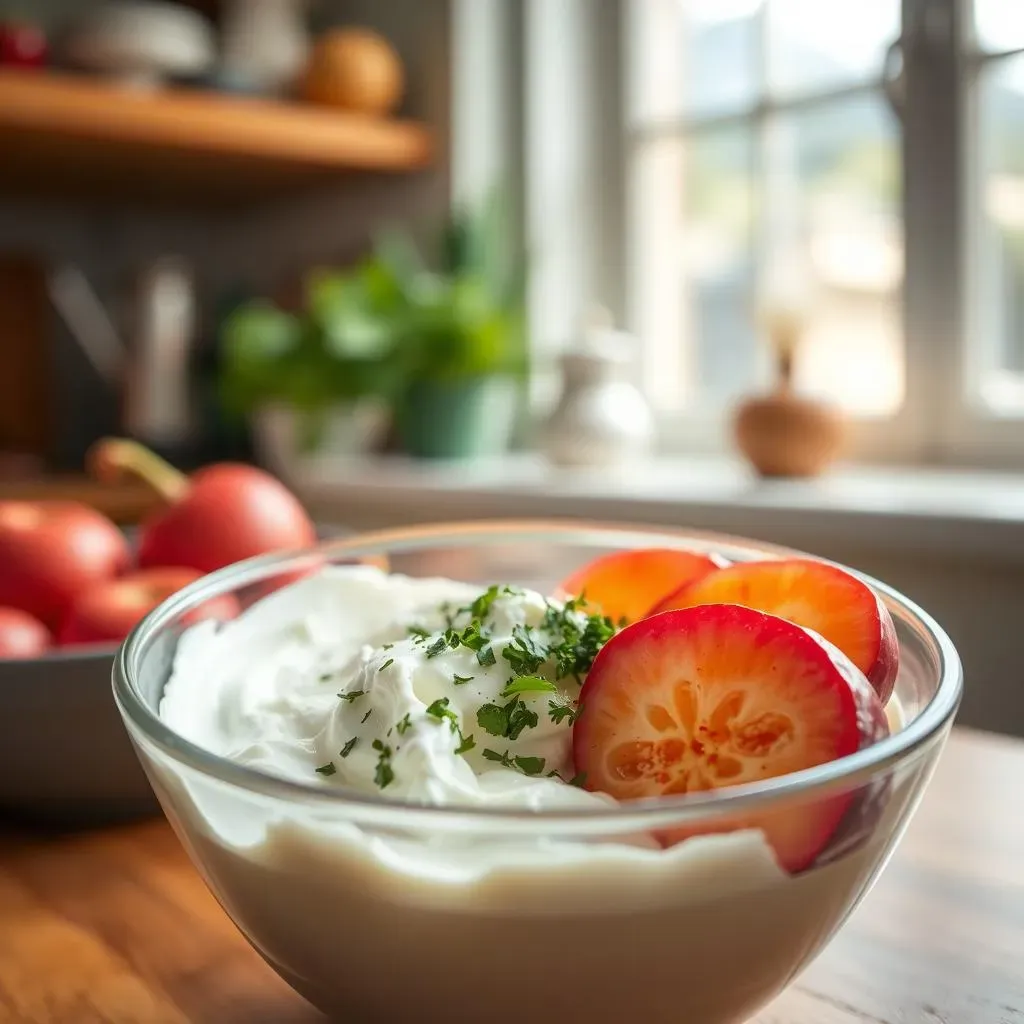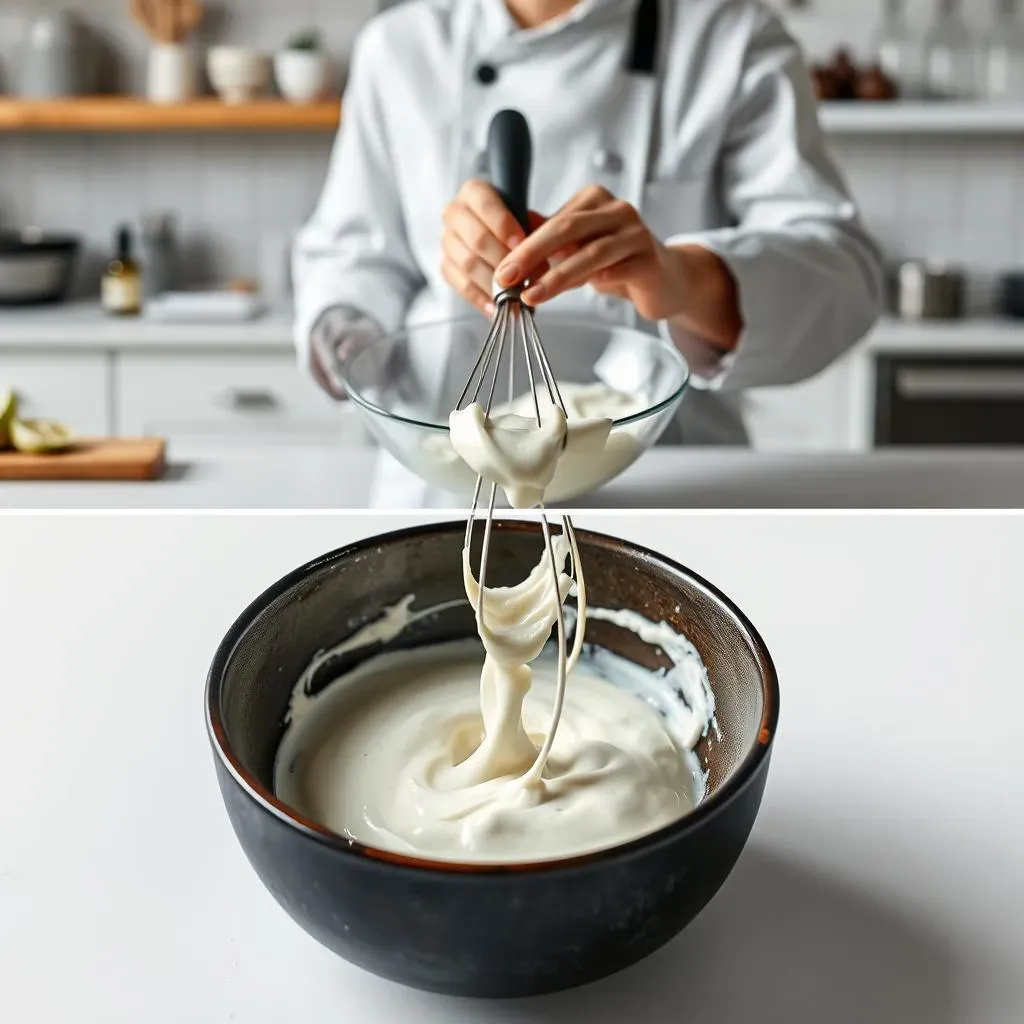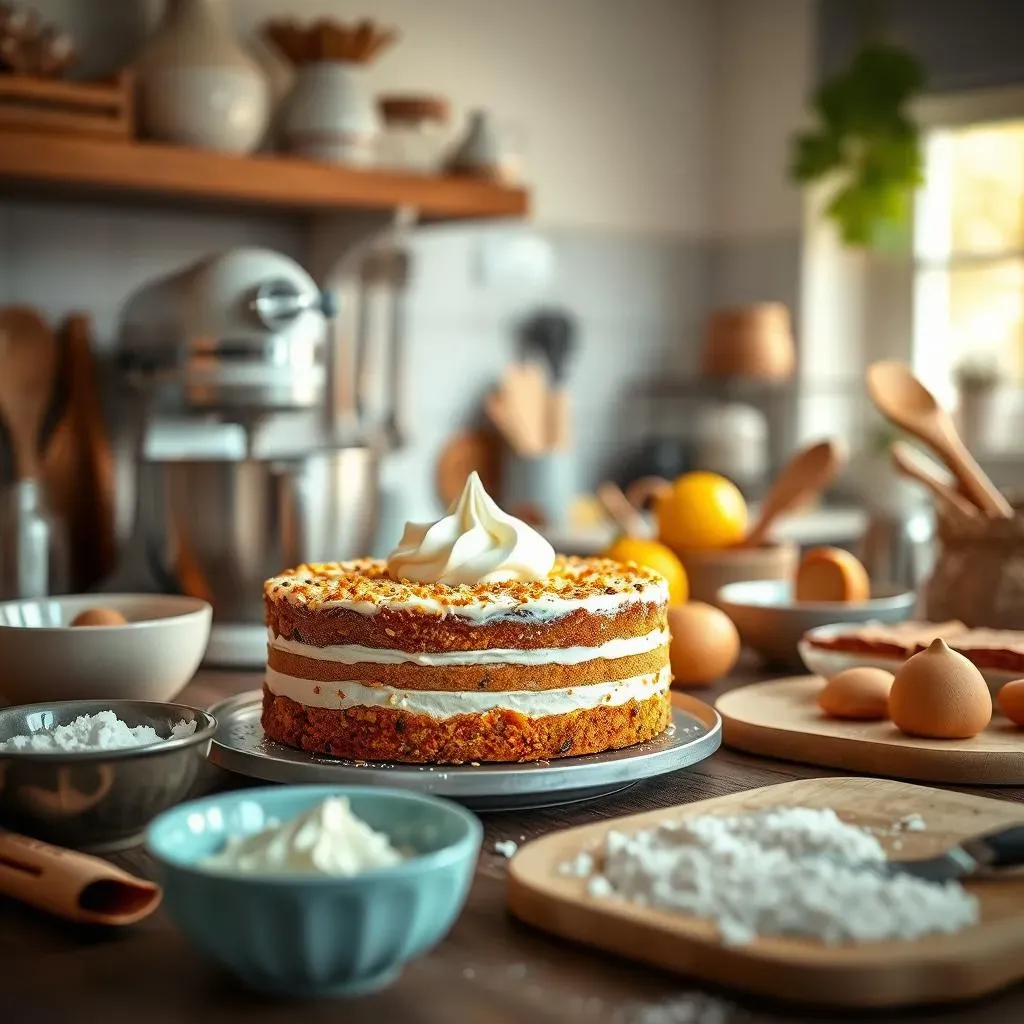Table of Contents
Ever found yourself mid-recipe, staring into an almost-empty fridge, realizing you're completely out of milk? It's a kitchen crisis we've all faced. But don't panic! There's a tangy, creamy superhero waiting in the wings: sour cream. Yes, that's right; you can use sour cream as a milk substitute in many recipes. I know it sounds a little weird, but trust me, it works, and sometimes it even makes things taste better. This isn't about just slapping some sour cream in and hoping for the best. This guide will show you exactly how to use sour cream as a milk substitute, covering the right ratios, techniques, and even some baking secrets. We'll explore when it's a perfect swap and when you should maybe think twice. So, let's get started and turn that kitchen "oh no!" into a "yes, I can!" moment.
Understanding When to Use Sour Cream as a Milk Substitute

Understanding When to Use Sour Cream as a Milk Substitute
When Sour Cream Shines as a Milk Swap
Okay, so you're thinking of using sour cream instead of milk. Smart move, sometimes! But it's not a one-size-fits-all solution. You've got to think about what you're making. Sour cream is thick and tangy, unlike milk, which is thin and pretty neutral. Therefore, sour cream works wonders when you want to add richness and a bit of zing. Think creamy soups, sauces, and dips where that extra flavor is a plus. It's also great in baking when you want a moist and tender result. Like, imagine a cake that's got a little extra something, that's sour cream working its magic. It's not just about substituting; it's about enhancing.
But, hold on, don't go swapping milk for sour cream in everything! I wouldn't recommend it for something like a bowl of cereal, that's for sure. You want to avoid using it in recipes where a neutral flavor is key or where a thinner consistency is crucial. Think delicate sauces or anything where the tanginess of sour cream will clash with the other flavors. It's all about understanding the flavor profile and texture you're aiming for.
Situations Where It's Not the Best Idea
Now, let’s talk about where sour cream might not be your best friend. If a recipe calls for a large amount of milk, like in a big batch of mashed potatoes, swapping it all for sour cream might make them too dense and tangy. You'd end up with something closer to a dip than a side dish. Also, some recipes rely on the thinness of milk for the right texture; for these, sour cream will just mess things up. So, while sour cream is an amazing substitute, it's important to know when to use it and when to stick to milk or find another alternative. It's about knowing the rules before you break them.
It's also worth noting that sour cream has a higher fat content than most types of milk. This can affect the overall richness and calorie count of your dish. Therefore, if you're aiming for a lighter recipe, this may not be the best substitute. Also, the tanginess could overpower other flavors in the recipe, so keep that in mind.
Use Sour Cream When: | Avoid Sour Cream When: |
|---|---|
You want richness and a tangy flavor. | A neutral flavor is needed. |
Making creamy soups or sauces. | The recipe needs a thin consistency. |
Baking for a moist result. | There is too much milk in the recipe |
You need a substitute in dips. | You are aiming for a lighter recipe |
Considering the Fat Content and Taste
Finally, let's consider the taste and fat content. As I said before, sour cream brings a noticeable tang. This can elevate certain dishes, but it can also be a problem in others. You have to ask yourself, do you want that extra zing? If yes, then go ahead. If not, maybe try a different substitute. Also, the fat content of sour cream is higher than milk, which affects the richness of your dish. While this can be great for certain recipes, it might not be ideal for others. It's all about balance and understanding what each ingredient does to your food.
Remember, cooking is a bit of an adventure. Don't be afraid to experiment, but always be mindful of how your ingredients interact. Using sour cream as a milk substitute can be a game-changer, but it’s important to know when and how to do it right. It's about making informed choices, not just throwing things in and hoping for the best.
How to Use Sour Cream Instead of Milk: Ratios and Techniques

How to Use Sour Cream Instead of Milk: Ratios and Techniques
The Key to Success: Diluting Sour Cream
Okay, so you're ready to swap milk for sour cream, but hold up! You can't just plop a spoonful of sour cream into your recipe and call it a day. It's way too thick. The secret here is to thin it out. Think of sour cream as a super concentrated version of milk. You've got to add some liquid to get it to the right consistency. Water is a simple and effective choice, but you can also use milk if you have a little bit left or even some broth if you're making a savory dish. The goal is to get it to a pourable consistency, similar to milk.
The general rule of thumb is about 3/4 sour cream to 1/4 liquid. For every cup of milk you need, use 3/4 cup of sour cream and 1/4 cup of water, milk, or broth. But this isn't set in stone. You may need to add a little more liquid to reach the consistency of milk. Always add the liquid gradually, mixing as you go, until you reach the right consistency. It's like painting, you don’t want to put too much paint at once, you want to add layers.
Mixing Methods for the Best Texture
Now that you know the basic ratio, let's talk about how to mix it properly. You don’t want to end up with clumps of sour cream floating around. The best way to achieve a smooth consistency is to whisk the sour cream and liquid together in a separate bowl before adding it to your recipe. This ensures everything is nicely combined and will incorporate smoothly into your dish. Start by adding a small amount of liquid and whisking vigorously. Then, add the remaining liquid gradually until you get a smooth, pourable mixture. Think of it like you are making a sauce, it's all about how you incorporate the ingredients.
If you're using a hand mixer or a stand mixer, you can also use that to combine the sour cream and liquid. Just be careful not to overmix, as this can make the sour cream too thin. You want to mix it just enough to combine everything. This is more useful if you're making a large batch. Remember, the goal is to make a nice smooth substitute that will work perfectly in your recipe.
Ratio | Mixing Method | Liquid Options |
|---|---|---|
3/4 sour cream to 1/4 liquid | Whisk in a separate bowl gradually | Water, Milk, Broth |
Adjusting for Flavor and Recipe Type
Alright, let’s talk about flavor. Sour cream has a distinct tang, which can be a great addition to certain recipes, but it also might not be what you’re going for. If you find the tang is too strong, you can try adding a pinch of sugar or a tiny bit of baking soda to balance it out. This is especially useful when using sour cream in baking. It will help neutralize the sourness and make it a better fit for sweet recipes. Also, different recipes will need slightly different consistencies. For example, if you’re making a sauce, you might want it a bit thinner than if you're using it in a cake batter. Therefore, adjust the amount of liquid accordingly.
Also, if you're using reduced-fat sour cream, you might need to add a little more liquid to get the right consistency. Reduced-fat versions tend to be thicker, so you may need to experiment a bit to get it just right. Don't be afraid to taste as you go and make adjustments as needed. Cooking is all about experimenting and finding what works best for you. Also, keep in mind that you can add a bit of extra salt to savory dishes to enhance the flavors. It's all about balancing the taste to match your needs.
Baking and Cooking with Sour Cream: Tips and Tricks

Baking and Cooking with Sour Cream: Tips and Tricks
Baking Bliss with Sour Cream
Okay, let's get to the fun part: baking! Sour cream is a total game-changer in baking, seriously. It makes cakes and muffins incredibly moist and tender, almost like they're hugging your taste buds. You know how some baked goods can be dry and crumbly? Sour cream fixes that. It also adds a subtle tang that enhances the other flavors, making everything taste a bit more complex and delicious. It's like a secret ingredient that makes people ask, "What's your secret?"
When you're using sour cream in baking, remember that dilution tip I gave you. You still want to thin it out, but you might want to use milk instead of water for extra richness. Also, you might want to add a little more sugar to balance the tang. It's all about playing around with the recipe until you get the perfect result. And don't be scared to experiment. Try adding sour cream to your favorite recipes and see what happens. You might just discover your new favorite baking trick.
Savory Sensations: Cooking with Sour Cream
Now, let’s talk about savory dishes. Sour cream is just as amazing in cooking as it is in baking. It can add a creamy richness to soups and sauces, making them taste like they’ve been simmering for hours. It’s also great as a topping for tacos, potatoes, or anything that needs a little extra zing. Think of it as a flavor booster that can elevate even the simplest dishes. The key here is to add it at the end of cooking, or gently heat it to avoid curdling. You don't want to overcook it, or it can separate and become a bit of a mess.
Also, sour cream is a great base for dips and dressings. You can mix it with herbs, spices, or even some hot sauce to create a delicious and versatile condiment. It's perfect for parties or just to have on hand for a quick snack. The options are endless, just let your imagination run wild. Remember, cooking is all about being creative and having fun, so don't be afraid to try new things and see what flavors you can create.
Baking Tips | Cooking Tips |
|---|---|
Use diluted sour cream for moisture. | Add at the end to avoid curdling. |
Add extra sugar for balance. | Great for dips and toppings. |
Experiment with different recipes. | Mix with herbs and spices for flavor. |